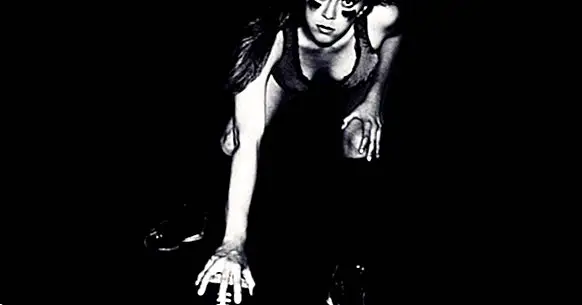Visualization: the power of the imagination to overcome difficulties
We have all experienced that moment once. That moment in which you play everything to a letter, that moment when you have the feeling that your life depends on it. The driving test, an audition, a match, a job interview, an opposition ...
We can train, study or prepare the event in question, but it will never be the same. That is, we can never recreate the concrete elements that imply the day of the test, such as the presence of the examiner or the classroom, or the unforeseen events that may happen (the heat, the noise, the opponent leaves with another strategy than the one planned ...) . In psychology we have a very useful technique in this type of situation: visualization . Next we will see what it is about.
- Related article: "Personal Development: 5 reasons for self-reflection"
What is visualization?
The visualization consists of experience, through imagination, any situation that could occur in real life . It has been traditionally used in phobias, as a resource to carry out an exhibition that was not feasible to do by not having the phobic stimulus itself. For example, we can not buy a plane ticket every time we have to resort to the technique of exposure to a patient with fear of flying, therefore, we rank the different situations according to the anxiety they would cause in the patient and we would proceed to experience them in imagination.
The case of Michael Jordan
They say that Michael Jordan sat on the bench before games, and he imagined the different possible situations that could hinder his objectives (a blockade there, a stop over there ...). In this way, he felt more prepared for these situations because they were not "unforeseen", he had already prevented them, indeed, he had trained them and he had already lived them.
Well, this little "trick" of the mythical NBA guard, together with the clinical experience of visualization, it leaves us a clear path to mental training, that is, an adaptation of the visualization technique to sport and personal development.
- Maybe you're interested: "Self-Instruction Training and Stress Inoculation Technique"
How to use it by combining it with the imagination
We must differentiate between "imagine" and "visualize", because although imagination is necessary for visualization, it is not enough. For the visualization to be carried out with all possible success , you have to meet certain conditions. First of all, we must design the scene that we are going to experience.
We will start with simple stimuli , as the color of the ball, and little by little, as we dominate each of the scenes, we will be sophisticated, getting to design the driving test, a job interview, or the first meters of a race. In this sophistication it will be advisable to incorporate more stimuli as well as images. The sounds, the smells, the touch, the balance or the emotions can help us to grant realism to the scene, and to contribute to create that memory trace that is activated in the moment of truth.
In addition, it is always very useful to add the perception of stimuli in 360 degrees, especially at the moment of beginning to imagine, the moment in which we transport ourselves to visualization. The indications of the examiner in the back seat, the feel of the ground on my feet, the clouds that glide over my football match ... all of this imprints on the scene of that natural realism that we are looking for.
Once we have designed the scene, it will be the moment of the execution of the visualization. It is advisable to start by checking our activation through the technique of breathing , with the objective of limiting activation at the cognitive level (leaving the mind blank) and directing our attentional resources to the task at hand.
Once we have controlled our activation level, we will begin to activate the scene that we have designed in our imagination , in real time. This does not mean that we can not "jump in time" if, for example, we want to prepare the moment to start the car, overtake and park (this is another advantage of the visualization with respect to actual training). We can help by creating auditory support, recording the description of the sequences with our own voice and reproducing it at the moment of visualization (if we do it with our eyes open we can use videos).
In addition to phobias and personal development, visualization is beginning to be used with people suffering from cancer and, although its effectiveness in these areas is still to be demonstrated, it is still indicative of the potency of the technique, of which we have given a mere outline throughout this article. To perform it in optimal conditions, we will require the guidance and instruction of an expert psychologist.



















